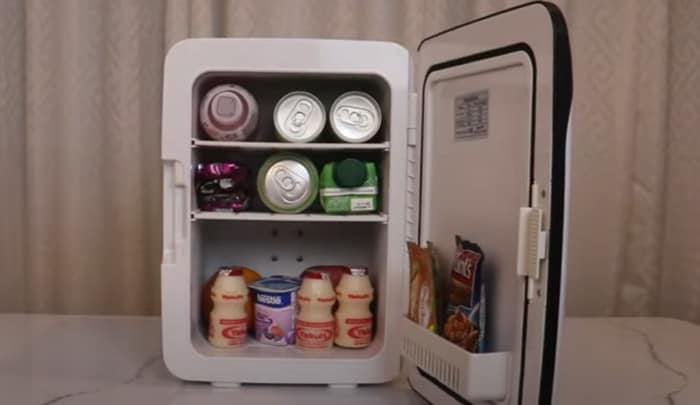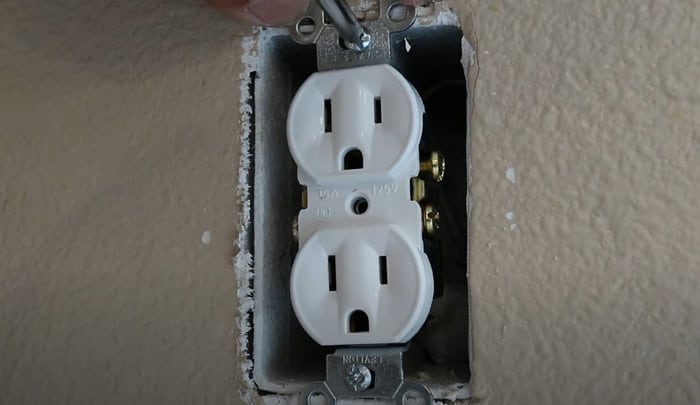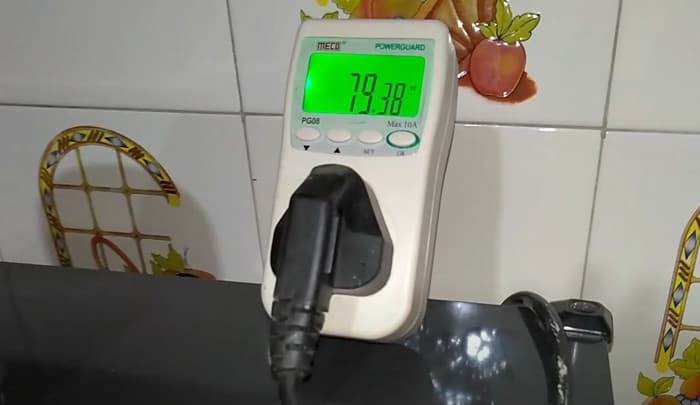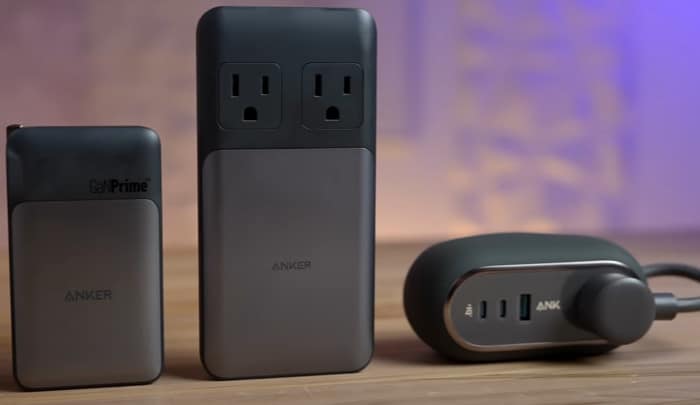Mini fridges have become a dorm room and small kitchen essential. Although it’s easy to find a spot to store them, the next conundrum presents itself: can mini fridges share an outlet, and are there pros and cons to doing so? Before you make the switch, you need to understand the details of connecting multiple appliances to one outlet. So, let’s dive right into the mini fridge power dilemma and explore the possible pros and cons of share an outlet.

Yes, it is possible to share an outlet between a mini fridge and another device. However, be sure that the total electrical load is not too much for the outlet or you may risk an overload and cause a power surge.
“Safety and efficiency in electricity use are not mere concerns, but rather should be considered a lifestyle. When dealing with a mini fridge, or any appliance for that matter, sharing an outlet can significantly overwork the circuit, creating a real fire hazard. Meanwhile, the possible benefit such an arrangement could bring, like saving space, is immeorably outweighed by its potential consequences. Always perform a power-check before plugging in an extra appliance to ensure the safest and most efficient use of your electrical system.”
Zebulon Broughton, Certified Electrical Engineer
What is a Mini Fridge?
A mini fridge is a type of small-sized refrigerator typically designed for use in individual dorm rooms or offices. While different models and styles may vary, most of these refrigerators are usually between one and two cubic feet in size and can generally be powered by either a standard electrical outlet or a USB cable. These can be a great decorative feature for styles such as Japandi.
The argument for owning a mini fridge centers on its practicality; they are incredibly versatile and portable, making it easy to transport from room to room or even outside the home. Additionally, they are affordable and can also act as an alternative to storing food items that don’t fit into an ordinary refrigerator.

On the other hand, there are several key disadvantages to owning a mini fridge. For starters, their smaller size means that they have reduced capacity compared to full-sized fridges, which limits the amount of food items you can store at any given time. Additionally, they can be noisy when running due to their built-in cooling fans and internal components, resulting in added noise pollution to your living space. Finally, their compact size also makes them more prone to tipping over if not properly secured — something that could result in possible injury or property damage if not monitored closely. Most of these models do not come with a freezer.
Considering the pros and cons associated with mini fridges, it’s important to assess if these small appliances are the right choice for your specific needs before committing to one. To better understand whether a mini fridge can share an outlet with other devices, it’s imperative to first gain an understanding of how electrical outlets work. In the next section, we will discuss understanding electrical outlets in more detail.
Summary
Mini fridges are a type of compact refrigerator typically used in dorm rooms or offices and come in a variety of sizes from one to two cubic feet. They are practical, portable and affordable, but have limited capacity, can be noisy when running due to their cooling fans, and may tip over if not secured properly. When deciding whether a mini fridge is the right option for your needs, it’s important to assess its pros and cons as well as gain an understanding of how electrical outlets work.
Electrical Outlets
Understanding Electrical Outlets is an important part of determining if a Mini Fridge can share an outlet. It is important to understand all the components and safety measures relating to outlets in order to make a safe and informed decision.
Electrical outlets, or receptacles, are designed to connect various electrical equipment to a source of electrical power safely and have several defining characteristics. Generally, there are two circular openings with three connected prongs that provide electricity when inserted correctly into the outlets. The two horizontal slots near the bottom of the outlet are known as the “hot” and “neutral” slots, while the top, vertical slot is the “ground.”
Modern outlets typically come in 120V or 240V varieties. This helps ensure proper current regulation and provides more power options for larger appliances like air conditioners or ovens. Many outlets also contain breakers that automatically shut off power when a short-circuit occurs as a safety measure which can help protect against electrical fires.
Despite their benefits, some argue that outlets are technically unsafe because they often call for installation and repair by an electrician or other qualified person. On the other hand, proponents of electrical outlets point out that modern 30-60A service boxes contain breaker switches and other protective devices that improve safety standards with regards to electricity.
Ultimately, understanding the design and safety measures associated with electrical outlets is important for making informed decisions about if a Mini Fridge can safely be shared on an outlet. As we explore whether sharing an outlet is a viable option, it is crucial to consider what type of power capacity each outlet can provide. Let’s move ahead in this article to understand Outlet Capacity and its implications for sharing an outlet with a mini fridge.

Outlet Capacity
Outlet Capacity is a major issue when it comes to deciding if a mini fridge can be plugged into the same wall socket as other electrical appliances. It’s important to know how much power the outlet can handle safely before making the decision. An average outlet has a capacity of 15-20 amps, but this depends on the wattage rating on different types of appliances and the total wattage they can draw together. Therefore, it may not be safe to assume that an outlet will support two devices based solely on its amp rating.
When plugging multiple items into one outlet, it’s important to consider their combined wattage rating and their effects on each other. For example, a mini fridge operating at full power takes about 250 watts, while most other common household items take far less than that. However, some lower-powered electronics still have higher wattages than appear likely from their size or design. This could have potentially dangerous effects if plugged into the same outlet with a mini fridge. Overloading an outlet with too many wattage-consuming items can result in circuit breakers tripping or fuses blowing which may lead to wires overheating or fires occurring.
Knowing the wattage consumed by a mini fridge is therefore imperative before attempting to plug it into an extension cord or multiple device outlets sharing an individual wall socket. If the combined wattage of all items connected exceeds 15-20 amps then it is best to use more than one outlet to avoid overheating and the risk of fire in your home. By understanding the outlet capacity issue properly, you will be able to ensure safety when sharing a wall socket between appliance devices.
The next section will explore how Voltage & Overload Protection factors into whether sharing an outlet between two devices is safe or not.
Voltage & Overload Protection
One of the most common concerns when sharing an outlet with a mini fridge is the question of voltage and overload protection. This is because many wall outlets are not rated for full-size refrigerators, let alone a mini fridge. An overloaded circuit can potentially cause a fire hazard and should be avoided at all costs.
The pros of having voltage and overload protection are that it can protect your home from electrical fires caused by overloading a circuit. It also prevents damage to your appliances and fixtures due to excessive current flow. Additionally, using a surge protection device when plugging in your mini fridge can also protect its internal components from power surges.
The cons of voltage and overload protection are that it can add expense to the overall cost of running the mini fridge as you may need to purchase an additional surge protector or other device for this purpose. Additionally, some electrical circuits may not support stronger surge protection devices or require an upgrade or professional installation. This could increase both the cost of protecting your appliance and time required for installation.
Overall, having adequate voltage and overload protection is highly recommended when using a mini fridge with an outlet. Before plugging in any electrical appliance, it is important to ensure that it has the correct wattage rating to safely support the circuit without overloading it.

With that said, it is important to consider all safety factors before deciding whether or not to share an outlet with a mini fridge. The next section will discuss what you need to keep in mind when sharing an outlet with a mini fridge so you can make an informed decision about this setup.
Following this section about voltage & overload protection, we’ll look into the details surrounding sharing an outlet with a mini fridge in the next section.
- According to CNET, if the combined wattage of all of your appliances plugged into one outlet is less than the rated amperage for that circuit then it is considered safe.
- The average mini-fridge typically draw around 2 amps – 5 amps depending on size and type.
- An Electrician would be able to tell you what amperage your existing outlets are rated for.
Sharing an Outlet with a Mini Fridge
When considering the question of whether a mini fridge can share an outlet, it’s important to weigh the potential pros and cons. On one hand, using the same outlet for a mini fridge and another appliance might help save on energy bills. Similarly, sharing an outlet might provide convenience in certain instances. However, there are also potential downsides to consider.
For example, sharing a single outlet between the mini fridge and another appliance could potentially cause problems with a power surge if both appliances are on at the same time. Consequently, this could mean less safe use of both appliances while they are plugged into the same circuit. Furthermore, if both appliances draw too much power from the same source, it could cause damage to both appliances or even electrical hazards such as short-circuiting or tripping your household breaker.
Overall, when weighing the pros and cons of sharing an outlet with a mini fridge, it’s important to consider which types of appliances are being used in tandem and how much power each appliance draws at any given moment in order to determine whether sharing an outlet is a safe option for your home or office.
Adapters & Multi-Plug Options
When it comes to powering a mini fridge off the same outlet as other appliances or devices, adapters and multi-plug outlets are an option. These options are designed to allow multiple plugs from various appliances or electronic systems to be connected to the same outlet.
The pros of using adapters and multi-plugs is that it offers convenience when trying to free up outlets for other devices. Furthermore, this method may help in simplifying Installing a mini fridge. While some fridges come with 3 prong plugs that may require professional installation, multi-pin plugs can make the process easier.
On the flip side, there are some potential drawbacks to using adapters and multi-pins for powering a mini fridge and other devices on the same outlet. Potential risks include fire hazard caused by faulty wiring, insufficient power supplied by one outlet, dangerous levels of electrical current draw, and spikes in voltage when two or more large electronics are run at the same time.
Therefore, before deciding to use adapters and multi-pin outlets to power a mini fridge alongside other appliances and electronics, homeowners should carefully consider their electrical setup to ensure these potential hazards can be avoided.
Now that the pros and cons of using adapters and multi-plug outlets have been explored, it is important to acknowledge the potential risks of sharing an outlet with a mini fridge.

Potential Risks of Sharing an Outlet
When it comes to sharing an outlet with a mini fridge, one of the biggest risks to consider is the potential damage that could be caused to both the outlet and appliance. In some cases, if an outlet is overloaded then it can cause serious harm like short-circuiting or even potentially starting an electrical fire. This can be especially dangerous if there are other electronics connected to this same outlet as well.
On the other hand, some people may claim that sharing an outlet with a mini fridge poses no risks at all, but this unfortunately isn’t always true. Appliances draw more energy than plugging in a single device and they can also create surges over time that can overload the circuit breaker and blow out the fuse. Additionally, since mini fridges tend to pull in large amounts of electricity continuously, they can wear down wiring leading up to the outlet which could also put you in danger.
Ultimately, when it comes to using a mini fridge and sharing an outlet with other devices, it’s important to make sure you have enough outlets and amps available so that your circuit doesn’t get overloaded. Make sure that you are aware of any applicable laws and regulations before attempting to share an outlet.
Finally, if these risks still feel too high, it’s often best not to take chances and invest in a dedicated outlet for your appliance instead. By making sure your mini fridge is on its own circuit you can ensure both your safety and use of electricity.
In conclusion, sharing an outlet with a mini fridge can come with certain risks such as potentially causing damage to the outlet or appliance itself due to electrical overload or short-circuiting. It is important to ensure that the circuits are not overloaded by checking applicable laws and regulations first and making sure sufficient outlets and amps are available.. If these steps can’t be taken then investing in a dedicated outlet may be necessary for further safety precautions. The next section will discuss our overall conclusions on whether or not one should share an outlet with a mini fridge.
Overall
When it comes to the question of whether a mini fridge can share an outlet, the answer depends greatly on the type of outlet and appliance in question. If possible, homeowners should only plug one appliance into each outlet to reduce any risk of overloads or fire hazards. However, larger appliances can share outlets as long as they fall within the limits of circuit load capacities.
Using a power strip to share an outlet is not a recommended solution since this does not provide any extra protection for both the fridge and other devices sharing the same outlet. Using GFCI outlets and surge protectors are highly recommended solutions whenever it is necessary to connect multiple appliances or electronic devices to the same outlet.
Just like with any appliance or electronic device, mini fridges present several safety risks if they are misused or damaged in any way. Homeowners must always be mindful of these risks and take proper precautions when dealing with similar appliances in their homes. Ultimately, by obeying safety measures and allocating different outlets for different appliances, homeowners can enjoy the use of mini refrigerators with minimal risk of danger.
Answers to Frequently Asked Questions with Detailed Explanations
Will a surge protector help protect the outlet when both appliances are plugged in?
Yes, using a surge protector can help protect the outlet when both appliances are plugged in. Surge protectors regulate voltage, meaning that it can provide protection from sudden spikes or drops in voltage. This is important especially with multiple appliances, as they can draw a large amount of current which can overload the circuit and cause damage to both the appliance and the outlet. With a surge protector, excessive current will be diverted away from the outlet while still allowing power to flow to both heavy-duty appliances, such as a mini fridge and another plug-in device.
How much power can a single outlet safely handle?
A single outlet is designed to handle up to roughly 15 amps of power, which is approximately 1800 watts at 120 volts. This should be more than enough power to safely power a mini fridge and other small appliances simultaneously. However, it’s always best to check the wattage requirements for all devices plugged into an outlet before trying to share an outlet, as some devices may require more power than others. Additionally, depending on the circuit breaker for the outlet in question, it may not be safe to exceed the maximum load listed by the manufacturer of that breaker. If any device draws significantly more power than expected, an additional outlet should be used for safety.
What is the recommended wattage for the outlet being used for the mini fridge?
The recommended wattage for an outlet being used for a mini fridge is 15 to 20 amps, or 1800–2400 watts. You should always check with your appliance’s specifications before plugging it into an outlet. Plus, you should make sure that the outlet is properly rated and grounded. Never overload existing outlets by plugging too many appliances into them.
To further prevent any safety risks, consider using a power strip that includes surge protection. This will help protect your electronics from sudden changes in current. Additionally, always use the right extension cord based on the wattage of your mini-fridge – For example, the cord should be rated at least 125 volts with at least 14-16 AWG (American Wire Gauge) sizes.
References
https://www.familyhandyman.com/article/homeowners-guide-to-mini-fridges/
https://www.foodandwine.com/lifestyle/kitchen/best-mini-fridges





















As a licensed electrician, I cannot stress enough the potential risks of overloading one outlet, mini fridge or not- it’s a fire hazard one should avoid at all cost.
From my experience, yes, a mini fridge can share an outlet with a small low wattage appliance, but it’s certainly not something to make a habit of due to the potential overloading risk mentioned by Zelda.
Although the short answer is, technically, a mini-fridge can share an outlet with a lamp or other low-wattage item, it’s always important to check your appliance’s power draw to avoid the fire hazard that comes with overloading an outlet. However, to ensure absolute safety, I always recommend having a dedicated outlet for refrigerators, full-sized or mini, especially if being used for long-periods, as these devices can occasionally draw more power during cycles.
In my 20 years of experience as an electrician, I’ve seen way too many overloaded outlets cause serious problemsm, fires even! No matter if it’s a mini fridge, lamp, or television, it’s crucial to know the amp rating of your device and the capacity of your outlet before plugging anything in.
Honestly, in my many years of tinkering with electronics around the house, I’ve experienced that device load on outlets can form a precarious situation. I once had a coffee maker and mini fridge sharing an outlet and didn’t think it was a big deal until I noticed the excessive heating of the cord and outlet. It pays to check the amp rating and capacity beforehand, saves you burnt cables or worse, believe me!
I wholeheartedly agree with you Coltrane, checking the amp rating and capacity is practical but not everyone’s cup of tea; instead, a simple rule of thumb would be to avoid plugging two high-consumption appliances into one outlet. It’s a habit that can save you from a future fire hazard or expensive repairs.
I concur with you Percival, plugging two high-consumption appliances into one outlet is indeed a risk not worth taking. From my experience, many house fires have started precisely from this practice that people perceive as harmless.
Absolutely on the money there, Eulalia. More often than not, people underestimate the consequences of powering multiple high-consumption devices from a single outlet. I have been called one too many times to fix burnt out outlets that result from this incorrect practice.